If you’re looking to level up your guitar playing skills, then learning how to tune an electric guitar is an essential step. Tuning a guitar can be intimidating for many amateur or beginner players – but with a few simple steps and the right tools, it doesn’t have to be! Whether you’ve just purchased your first electrified stringed instrument or are simply looking for some tips on refreshing your knowledge of tuning techniques, this blog post will provide all of the information that you need. We’ll cover what equipment is necessary, walk through the standard tuning process, and discuss troubleshooting any issues along the way. Get ready to learn how to tune like a pro!
How To Tune An Electric Guitar?
Tune By Ear
The traditional way to tune a guitar is by ear. This method does not require any kind of digital tuner or device, just your ears! Tune each string one at a time in the following order: E (lowest pitch), A, D, G, B, and E (highest pitch). Begin with your low E-string (the thickest string), and pluck it while turning the tuning peg until you can hear its resonance matching a different instrument or tuning app. Continue this process for each string going up until all of your strings have been tuned correctly.
Tune Using Digital Tuner
If you don’t feel confident in tuning by ear, there are many digital tuners available that can help you get your guitar in tune quickly and accurately. Digital tuners typically come with a microphone that you can clip onto the headstock of your guitar, or even with a built-in contact pickup system. When you strum the strings of your guitar, the tuner will provide accurate visuals to help guide you in tuning each string correctly. [1]
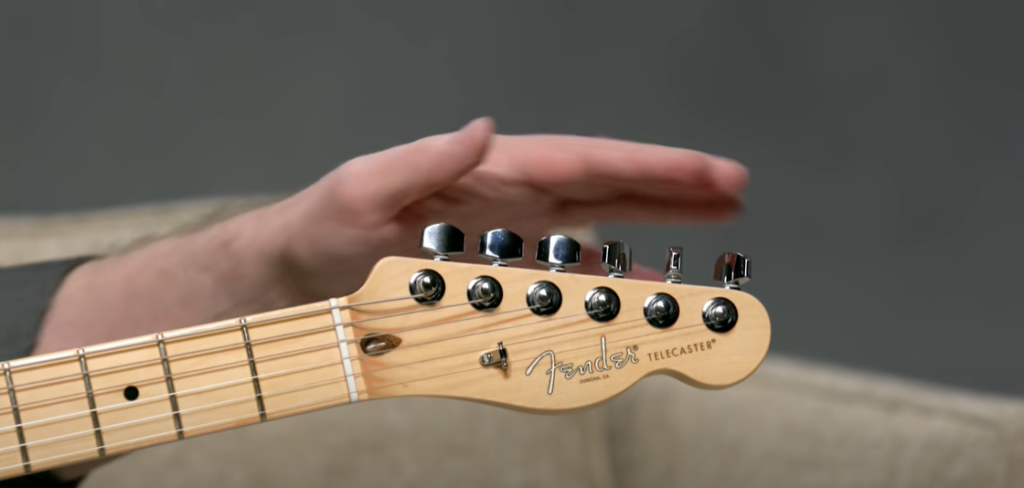
Tune Using Online Tuning Applications
There are also many free online tuning apps available for both PCs and mobile devices that allow you to tune your electric guitar from anywhere. All you need is an internet connection and a pair of headphones! Simply plug in your headphones into your device, open up the app and select which type of guitar you’re tuning (electric or acoustic), then follow the instructions provided. The app will play the note of each string and all you need to do is turn the tuning peg until your guitar strings match the notes being played.
Plug-in/Pedal Tuners
Plug-in or pedal tuners are also a great option for those who want the convenience of tuning their electric guitar quickly and accurately. These tuners usually come in small, compact sizes which make them perfect for on-the-go use. The tuner plugs directly into your guitar’s input jack and will detect the note being played as you strum each string, displaying it clearly on its LED screen. This is especially helpful if you play live shows often, since it ensures that your instrument will be in tune every time.
No matter what method you choose, tuning your electric guitar correctly is essential to producing good sound quality and playing with accuracy. With practice and patience, anyone can learn how to properly tune an electric guitar. With the right tools and a bit of practice, you’ll be playing your favorite songs in no time! [2]
How To Tune A Guitar Without A Tuner?
If you don’t have a tuner, it’s possible to tune an electric guitar manually. Here are the steps:
- Begin by tuning your guitar to itself. To do this, play the 5th fret on the first string and compare it to the open 6th string (or vice versa). They should be exactly the same tone. If not, adjust tuning pegs until they match.
- Once the two strings are matched, use them as reference points for the remaining strings. Play each string at its 5th fret and adjust its pitch accordingly using tuning pegs until it matches either of these two notes you’ve already tuned up.
- Now that all strings are in tune with each other, it’s time to double check the tuning. Play an open string and then the 12th fret of that same string. They should be the same pitch, so if they’re not, adjust your tuning pegs until they are.
- Lastly, play all strings at once together and listen for any discordance indicating a note is out of tune. If you notice one isn’t quite right, tweak its tuning peg until it does match up with the rest of them.
Now that you know how to tune a guitar without relying on a tuner, you can take your practice outside or away from home without having to worry about hauling equipment around! All that’s needed is a bit of practice and patience.
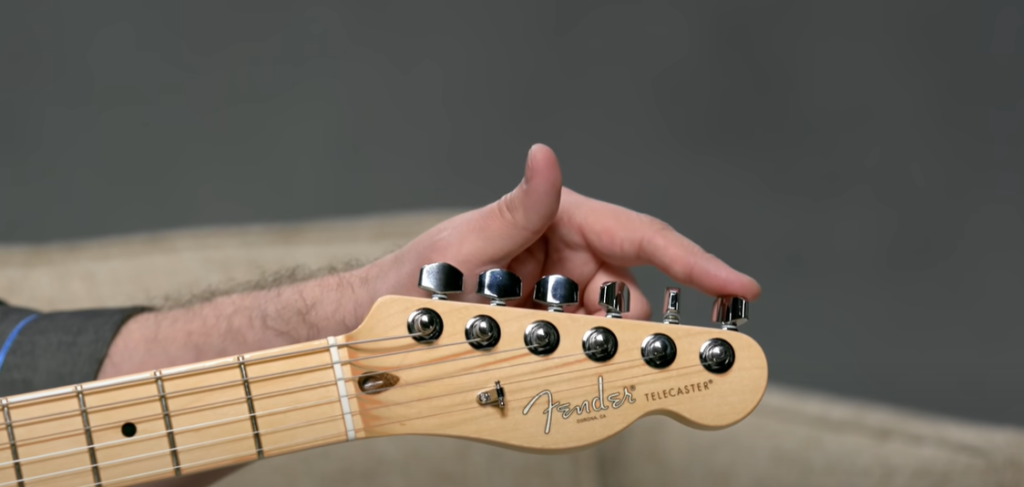
Best Guitar Tuning Apps to Tune an Electric Guitar
In this digital age, tuning your electric guitar has become easier than ever with the help of several mobile applications. These guitar tuning apps can help you ensure that every string on your instrument is in perfect pitch with no effort at all. Here are some of the best guitar tuning apps to make sure you get the most out of your electric guitar:
- Fender Tune: This app makes it easy to tune any kind of guitar, including electric guitars. It comes pre-loaded with a variety of alternate and open tunings such as drop D, dadgad, and Open C. You can also create custom tunings for specific songs or styles of music. The interface is intuitive and simple to use and allows for quick tuning adjustments.
- Cleartune: This app uses an advanced algorithm to accurately tune any electric guitar string. It also has a chromatic tuner and frequency meter for precise tuning, as well as a highly responsive sound analyzer for subtle variations in pitch. It can be used with a variety of instruments including basses, ukuleles, mandolins, banjos, or pedal steel guitars.
- GuitarTuna: This is another popular option when it comes to tuning electric guitars. The app features both automatic and manual tuning modes so you can get the perfect sound every time. It has a simple interface that makes it easy to use and offers support for many different types of instruments including acoustic, electric, classical, and bass guitars.
- Pitchbot: This app has a variety of tuning options for electric guitars, including open tunings, alternate tunings, and custom tunings. It also has an integrated metronome and tempo settings that allow you to practice at any tempo you like. The app is designed to work with both acoustic and electric instruments and can be used on iPhone or Android devices.
These are just a few of the many guitar tuning apps available on mobile devices today. Whether you’re looking for a quick way to tune up your electric guitar or want more advanced features such as custom tunings, these apps can help make playing your instrument easier than ever before. So don’t forget to download one of these apps and get tuning your electric guitar as soon as possible! [3]
Alternative Guitar Tunings
It is possible to tune an electric guitar in alternative tunings for different sounds and effects.
Commonly used alternative tunings are:
- Drop D tuning – this is when the low E string is tuned down one whole step from standard tuning, producing a low D note.
- Open G major – all strings are dropped one note from standard tuning with the exception of the B string which is lowered two notes. This produces a ringing open chord sound that often evokes blues music.
- Open A minor – all strings are lowered one half step from standard tuning, with the exception of the high E string which remains unchanged, creating an A minor chord at open position (with no fingers pressing on any fret).
- Open D minor – this tuning is similar to the open A minor but with the low E string lowered one and a half steps. This creates an open Dm chord at the open position.
It is also possible to create your own custom tunings by altering any combination of strings within a standard or alternative tuning. Experimenting with different combinations can yield interesting and unique sounds that you may find useful in your playing. Have fun and don’t be afraid to break out of standard tuning every now and then! [4]

Why Are Acoustic Guitars Tuned More Frequently Than Electric Guitars?
Acoustic guitars are typically tuned more frequently than electric guitars for two reasons. First, acoustic guitars tend to be made of wood, which is a material that can expand and contract based on humidity levels. These changes in humidity can cause the strings to become slack or tight and require more frequent tuning. Secondly, acoustic guitars also have less tension on their strings than electric guitars. This means that small fluctuations in string tension caused by playing or environmental changes will affect the tuning of an acoustic guitar much more quickly than it will affect an electric guitar. For this reason, regular tuning of your acoustic guitar is essential to keep it sounding its best.
Finally, give your guitar a good strum and listen closely for any notes that may be out of tune. Make adjustments as necessary and remember to always retune your acoustic guitar before playing.
With regular tuning and maintenance, you can ensure that your acoustic guitar will remain in perfect tune and sound its best for years to come.
Do You Tune An Electric Guitar The Same As An Acoustic?
The answer is yes and no. You tune an electric guitar the same as an acoustic, but with one exception – you need to use a special digital or chromatic tuner with electric guitars. This is because the pickups on an electric guitar amplify the string vibrations, making it easier for the tuner to detect them. An acoustic guitar doesn’t have any pickups so it relies solely on your ears to recognize when each string is in tune.
Therefore, while you still follow all of the same steps to tune a standard 6-string electric guitar (EADGBE) as an acoustic guitar, it may be helpful to invest in a digital or chromatic tuner made specifically for electric guitars.
Once you have your tuner ready to go, you can begin tuning your guitar. Make sure that you tune each string individually, starting with the low E-string and working your way up to the high E-string. As you tune each string, make sure to pluck it multiple times and adjust the tuning peg as needed until you have a clear pitch on your tuner. It may also help to cross check your notes against one another for accuracy. Once all strings are in tune, give them a good strum or two just to double check before playing any music! [5]
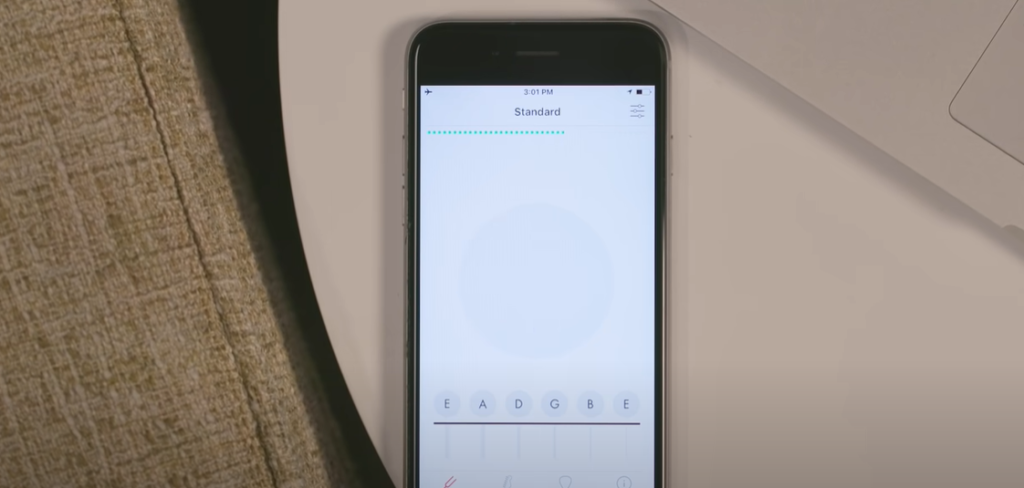
Are Electric Guitars Hard To Tune?
It depends. While tuning a guitar can be tricky for beginners, electric guitars are generally easier to tune than acoustic guitars because of their pickups and tuners. All you need is a good digital or chromatic tuner and you should have no problem getting all your strings in tune. With the right tools and practice, tuning an electric guitar doesn’t have to be hard!
Once you know how to tune an electric guitar properly, it becomes much easier over time. It may feel like a daunting task at first but with practice and patience, you will eventually become a pro at tuning both acoustic and electric guitars!
How To Keep Your Electric Guitar In Tune?
Once your electric guitar is properly tuned and sounding good, you need to keep it in tune. To do this, you will need a few tools: an electronic tuner, some extra strings, and a string winder.
To begin tuning your guitar with an electronic tuner, you should turn the tuning pegs until each string reads the correct note on the tuner. Make sure the strings are tight enough so that they don’t slip out of tune when playing. You may also want to use a capo to make sure that all notes are in tune throughout the entire neck of the guitar.
If your guitar strings start slipping out of tune, chances are they need to be replaced. Replace one string at a time, winding the new string around the tuning peg. Make sure that your strings are always wound in the same direction (clockwise) and make sure you keep tension on the string as you wind it to prevent slipping.
Another way to maintain your guitar’s tuning is by using a string winder. This tool helps keep all of your strings tight and firmly secured to the headstock of your guitar. Make sure to use this regularly, especially after playing for long periods of time or when replacing strings.
Keeping up with regular maintenance can help ensure that your electric guitar sounds great for years to come. With proper care and attention, you’ll be able to play beautiful music every time! [6]
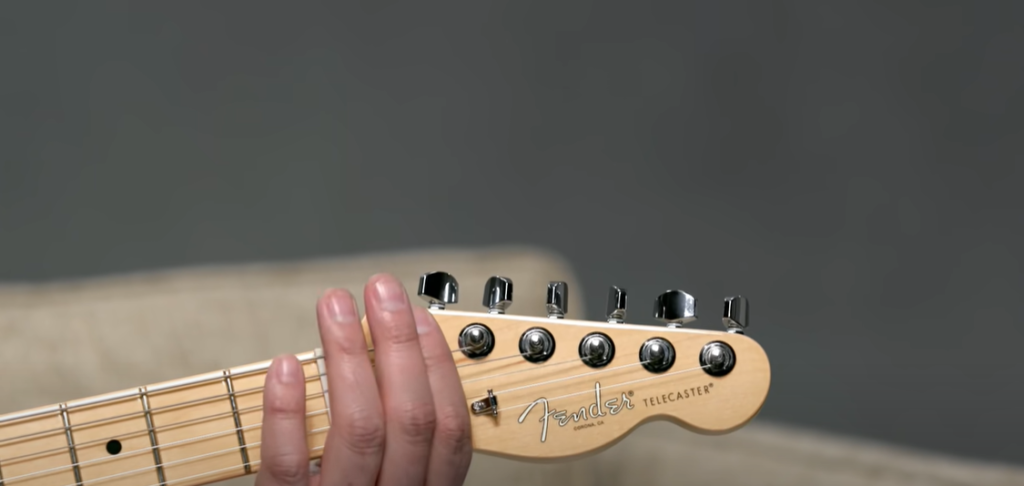
How To Tune An Electric Guitar For Heavy Metal?
Tuning an electric guitar for heavy metal can be a bit more challenging than tuning a standard electric guitar. Heavy metal music requires much heavier strings, as well as higher string tension, which can cause the strings to be out of tune more easily. To get the right sound, you will need to take extra care in setting up your instrument and tuning it properly.
To start, make sure you have good quality heavy gauge strings on your guitar. These should be at least .010” or higher. Be sure to use new strings whenever possible; old strings will not respond as well when being tuned. Once you’ve got the proper gauge of string installed on your instrument, it’s time to tune up!
Next, apply this same process to all strings one-by-one starting from low to high. Make sure each note rings out clearly and make any necessary adjustments as needed. It’s important to check each note not only against its own harmonic but also against other strings in order to ensure proper intonation throughout your instrument.
Finally, if you are going for more of a metal sound, you may want to tune some of your strings down a half step or even a full step. This is often done with the low E string to achieve a darker and heavier sound.
Once you’ve got everything tuned up correctly, it’s time to rock out! With the right setup and tuning, your electric guitar will be ready for any heavy metal riff you can throw at it. [7]
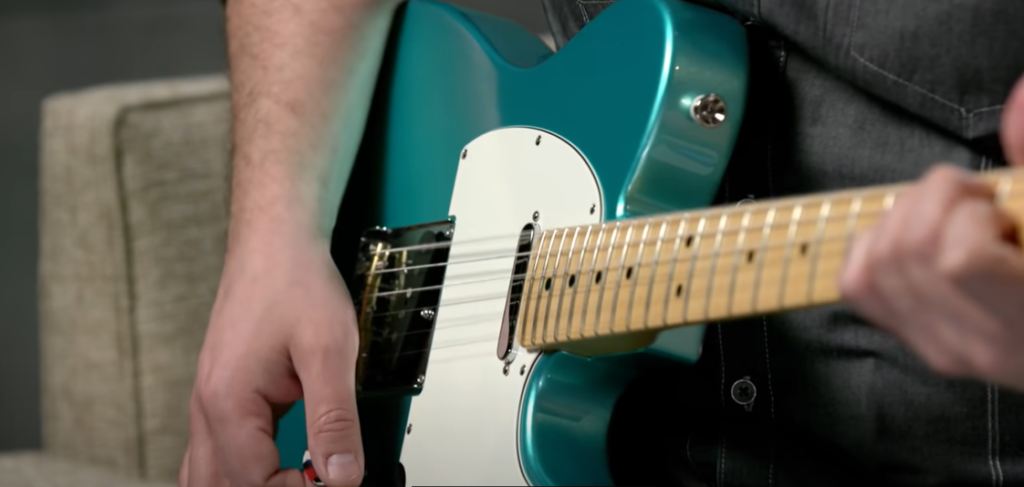
Tuning Your Electric Guitar: Standard Notes and Step-by-Step Instructions
Properly tuning your electric guitar is crucial for achieving the best sound. This comprehensive table provides you with the standard tuning notes and step-by-step instructions on how to tune your electric guitar.
| String | Standard Note | Step-by-Step Tuning Instructions |
|---|---|---|
| 1st String (High E) | E |
|
| 2nd String (B) | B |
|
| 3rd String (G) | G |
|
| 4th String (D) | D |
|
| 5th String (A) | A |
|
| 6th String (Low E) | E |
|
Explanation of the Table:
- String: Indicates the guitar string number.
- Standard Note: Lists the standard note to which the string should be tuned.
- Step-by-Step Tuning Instructions: Provides detailed instructions on how to tune each string to the standard note.
Proper tuning is vital for achieving the desired sound on your electric guitar. Follow these step-by-step instructions to ensure your guitar is in tune:
1st String (High E): Tune the 1st string to E by turning the tuning peg to match the note.
2nd String (B): Tune the 2nd string to B by adjusting the tuning peg as needed.
3rd String (G): Match the 3rd string to the G note for perfect tuning.
4th String (D): Achieve a D note on the 4th string using the tuning peg.
5th String (A): Tune the 5th string to A to maintain proper pitch.
6th String (Low E): Ensure the low E string is perfectly tuned to its standard note.
With this detailed information, you can confidently tune your electric guitar for the best possible sound.
FAQ
What is the standard tuning for an electric guitar?
The standard tuning for an electric guitar is EADGBE (low to high). This tuning is also known as “standard” or “Standard E” tuning. It is the most common tuning used for playing rock and blues music, as well as many other genres.
How do I tune my electric guitar?
Tuning your electric guitar can be done in several different ways. You can use a digital tuner, an electronic pitch pipe, a tuning fork, or even just match the sound of another instrument that you know is in tune. If using one of these methods of tuning, it’s important to remember to start from the lower strings and work up – starting with the low E string and ending with the high E string. As you tune the strings, be sure to press the string against the fretboard so that it is held firmly in place. This will help ensure each string is tuned properly and give you accurate results.
How often should I tune my electric guitar?
Your electric guitar should be tuned at least every time before you play, as well as periodically throughout your playing session if needed. Additionally, it’s a good idea to re-tune your instrument after changing strings or adjusting setup elements like bridge height or neck relief. Doing this will help keep your instrument sounding its best and allow you to get the most out of your playing experience.
What happens if my electric guitar is out of tune?
If your electric guitar is out of tune, it can sound muffled and unclear. Additionally, chords may not sound as they should and playing leads or solos might be more challenging than usual due to the out-of-tune strings. If you find that your guitar is regularly out of tune, it could indicate a need for further setup adjustments like bridge height or truss rod adjustment.
Can I tune my electric guitar manually?
Yes, tuning your electric guitar manually is possible with practice. To do this, start by finding the low E string on your instrument and tuning it to a reference pitch – either an electronic tuner or another instrument in the same key. Once the low E string is tuned accurately, use the harmonic technique to tune the remaining strings by ear. This technique involves playing a harmonic on each string and listening for the note of overlap as you move up the neck. By comparing these notes to the reference pitch, it’s possible to tune each string manually.
What type of strings should I use for my electric guitar?
The type of strings that you choose for your electric guitar will depend largely on your own personal preference, as well as the style of music that you play. Generally speaking, lighter gauge strings (such as .09-.042) are better suited for playing blues, jazz, and pop music while heavier gauge strings (.010-.052 or higher) are better suited for rock and metal styles. Ultimately, it’s important to find a set that feels comfortable and responds well to the way you play.
How do I restring my electric guitar?
Restringing an electric guitar is relatively simple if you take your time and follow some basic steps. Start by loosening each tuning peg until the string can be removed, then feed the new string through the bridge of your instrument (or into the back of a tremolo system). Take care to keep the strings in order as you remove them – this will help ensure that they’re put back in correctly. Then, wind each tuner clockwise until it’s tight and begins to hold tune before moving on to the next one. Finally, check for proper intonation with a digital tuner or other reference pitch before playing.
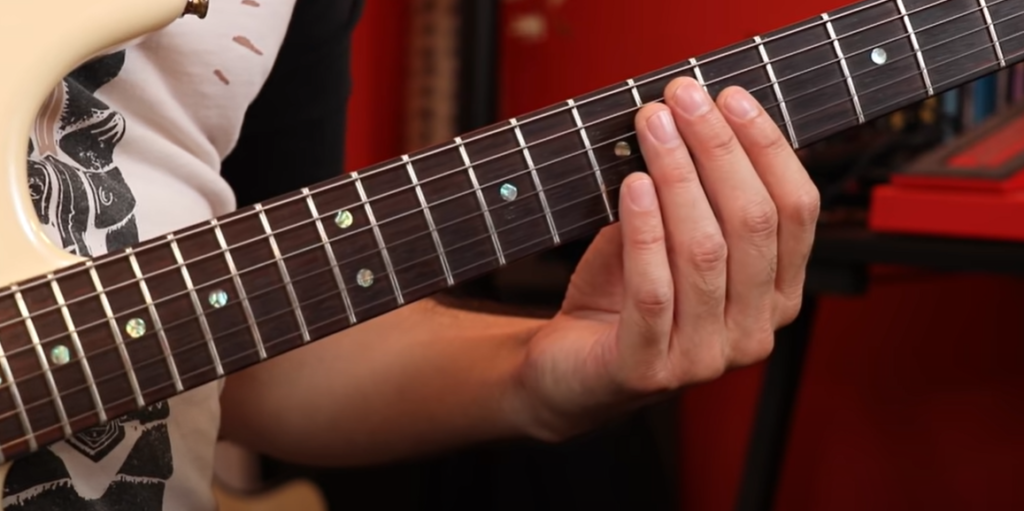
Do you tune an electric guitar the same as an acoustic?
No, an electric guitar requires different tuning techniques than an acoustic guitar. An electric guitar is usually tuned by using a chromatic tuner, while an acoustic guitar is tuned by ear. With a chromatic tuner, you can easily tune each string on your electric guitar to the exact note it should be in. To do this correctly, clip the end of the tuner onto the headstock of your instrument and pluck each string one at a time. The dial or LCD display will tell you if that string needs to be flat (lower) or sharp (higher). Adjust each string until it reaches its desired pitch before moving on to the next one. Once all strings have been properly tuned, you’ll know that your electric guitar is in tune and ready to be played.
Can guitar play without tuning?
Yes, but it will not sound pleasant. Even if you only plan to play without tuning for a few minutes, it’s important to make sure that all the strings are in tune with each other so that they won’t clash or cause any unwanted noise. If you don’t want to go through the process of tuning your guitar, try playing single notes and chords instead of full songs – this way, even if the strings aren’t perfectly in tune with each other, you’ll still get some enjoyment out of your playing. In conclusion, electric guitars require different tuning techniques than acoustic guitars, as they usually must be tuned by a chromatic tuner rather than by ear.
How can I use an electronic tuner to tune my electric guitar?
Using an electronic tuner is a straightforward way to tune your electric guitar. Simply turn on the tuner, pluck a string, and adjust the tuning peg until the tuner indicates that the string is in tune. Repeat this process for each string.
What is the method for tuning by ear without an electronic tuner?
Tuning by ear involves using a reference pitch, typically from a piano or another instrument, and matching the strings to that pitch. You can use the fifth fret method, harmonic tuning, or compare the sounds of strings to achieve proper tuning.
How can I avoid breaking strings while tuning my electric guitar?
To prevent breaking strings, tune your guitar gradually and gently. Don’t over-tighten the strings, and ensure they are properly lubricated with a small amount of graphite from a pencil or a dedicated string lubricant. Regularly replace old and worn strings to reduce the risk of breakage.
What should I do if my electric guitar has a floating tremolo system when tuning?
If your electric guitar has a floating tremolo system (e.g., a Floyd Rose), tuning can be more complex. Start by tuning the strings to the correct pitch, then fine-tune using the bridge’s adjustment screws. It may take some trial and error to balance the bridge while maintaining proper tuning.
How do I tune down or up for alternate tunings on my electric guitar?
Tuning down or up for alternate tunings is as simple as adjusting the tension of the strings using the tuning pegs. To tune down, loosen the strings; to tune up, tighten them. Be sure to use a reference pitch for the specific alternate tuning you want to achieve.
What is the importance of intonation when tuning an electric guitar?
Intonation ensures that the guitar plays in tune all along the fretboard. To adjust intonation, use a screwdriver to change the length of the strings behind the saddle on the bridge. This should be done after tuning each string to the correct pitch to ensure accurate intonation.
How can I keep my electric guitar in tune for a longer period of time?
To maintain tuning stability, keep your electric guitar in a stable environment with consistent temperature and humidity. Stretch your strings when restringing, lubricate the nut and bridge saddles, and check for any issues with the tuning pegs or machine heads that may cause tuning problems.
Are there any special considerations for tuning a 7-string or 8-string electric guitar?
Tuning a 7-string or 8-string electric guitar follows the same principles as a 6-string guitar. Use a tuner, reference pitch, or tuning by ear as needed. Ensure that you have the correct string gauge for your guitar to maintain proper tension and tuning.
Useful Video: How to Tune Your Electric Guitar | Guitar Tuner Standard Tuning E A D G B e
Conclusion
Tuning an electric guitar may seem daunting at first, but it doesn’t have to be. With the help of a tuner or tuning app, and a little bit of patience, anyone can get their electric guitar sounding great in no time. Remember to use your ear as well as any technology you’re using – listening for “sweet spots” throughout the process will ensure that your instrument is perfectly pitch-perfect! Once you master the proper way to tune your guitar, you can enjoy hours of playtime without worry or frustration.
Happy playing!
References:
- https://play-guitars.com/tune-an-electric-guitar/
- https://www.fender.com/online-guitar-tuner/electric-guitar-tuning
- https://www.sweetwater.com/sweetcare/articles/guitar-setup-how-to-tune-your-guitar/
- https://www.fuelrocks.com/how-to-tune-an-electric-guitar/
- https://guitargearfinder.com/guides/how-to-tune-guitar/
- https://www.schoolofrock.com/resources/guitar/beginners-guide-to-tuning-a-guitar
- https://www.musicgateway.com/blog/how-to/how-to-tune-a-guitar-for-beginners-how-to-tune-a-guitar-by-ear










Leave a Reply